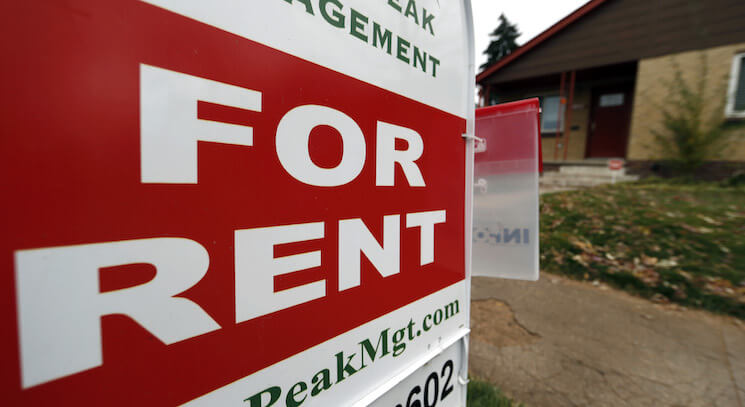Rental demand in the United States will continue to surge over the next decade

High and rising rents are squeezing residents of many metropolitan areas along the Atlantic and Pacific coastlines, including New York, San Francisco, Boston, and Washington, D.C. New research suggests that over the coming decade, these rental prices will likely continue to increase, and the upward pressure on rents will likely spread to other parts of the country.
According to a study by the Joint Center for Housing Studies at Harvard University, renting (as opposed to buying) has increased among all ages, household types, and income groups in the United States. And there is a combination of demographic and economic forces at work that are likely to make matters worse over the next 10 years. Population growth among the young and the elderly, who are more likely than others to rent, is partially responsible. Meanwhile, economic forces have lowered homeownership rates for not just the young and old but also middle-aged individuals, who traditionally have been more likely to own their own homes.
Here are three major trends that are likely to define rental demand over the next decade.
First, Millennials are still coming of age. As half of Millennials are in their teens, this generation (ages 19 to 35 in 2016) is continuing to enter the housing market and will also continue to boost the number of new renter households. Over the next decade, the number of Millennial renter households will double from its current number of 11.3 million to 22.6 million households. For lifecycle reasons, young adults of all generations have always tended to have less income and less wealth, making them more inclined to rent rather than to own. But a slack labor market, high student debt, and reduced access to mortgages and other forms of credit in the wake of the Great Recession of 2007-2009 have exacerbated this tendency.
Second, the growing minority population in the United States is projected to account for three-quarters of household growth in the coming decade. Strong flows of immigration will continue to contribute to the growing share of minority households in America. And primarily for economic reasons, minorities and immigrants are more likely to rent than U.S.-born white households. Research by the Joint Center for Housing Studies indicates that about half of all immigrants to the United States are renters, including 74 percent of immigrants under age 35. Accordingly, a rising share of minority and immigrant households are expected to further bolster the demand for rental housing.
Third, the oldest Baby Boomers will be moving into the 70-and-older age bracket over the next ten years. As senior renters typically don’t decide to buy a home later in life, older renters will simply be aging in place. Additionally, the aging of this generation may lead many senior homeowners to access the equity tied up in their homes and improve their accessibility to care by swapping out of homeownership for rental housing. Baby Boomers comprise a significant part of the American population. As they grow older, begin to retire, and require more care, rental demand by seniors will also grow.
These trends are unfolding against a backdrop of economic distress that has plagued many Americans since the turn of the century, which has made homeownership increasingly unattainable. Structural changes in the economy, such as the growth in low-wage service jobs coupled with declines in higher-wage production jobs, also affect all working-age households. Weak wage growth following a slow labor market recovery will put even more pressure on rental demand as would-be homebuyers feel less confident about their economic security.
That said, homeownership rates in the United States are already low by recent historical standards. For millennials, delays in major life events such as education, career advancement, parenthood, and marriage, will impede homeownership. While minority communities and the elderly seek greater flexibility and accessibility to fit their needs, more households will end up renting rather than buying.
So what can policymakers do to alleviate rising rents and make homeownership more affordable? One obvious step is to repair the damage done to labor and credit markets over the past decade or so. Other possibilities include making policy changes at local, state, and federal levels to increase the availability and accessibility of affordable housing. Here are a few options:
- Streamline permitting to promote affordable housing production, and expediting review of low- and moderate-income housing developments. Builders in Portland, Oregon say streamlining land-use and construction permitting would speed the creation of new homes, easing pressure on the housing market.
- Relax zoning restrictions that discourage high-density development and floor-size minimums in communities where they are unnecessary and outdated. Minneapolis’ outdated residential codes overhaul went into effect earlier this month.
- Change local codes to allow for the development of Accessory Dwelling Units, or ADUs, also known as “granny flats” or “garage-overs,” in high-density areas. Many localities are now encouraging the building of ADUs, most recently San Francisco.
- Provide housing protections for low-income families by passing inclusionary housing requirements, popular in cities such as Washington, D.C.
- Support asset building through Individual Development Accounts, or IDAs, to help low-income families save for long-term investments like homeownership.
- Strengthen federal housing programs such as the National Housing Trust Fund, which supports the development of rental units for extremely low-income families.
- Subsidize the cost of new housing or the rehabilitation of existing housing with support of the Low Income Housing Credit.
Failure to take some kind of action will bring continuing upward pressure on rents over the next decade.
—Nisha Chikhale is a research assistant at the Washington Center for Equitable Growth
